When building or renovating in Melbourne, compliance isn’t just a formality—it’s a legal necessity. Every stage of construction must meet Australia’s strict building standards, codes, and safety regulations to ensure structures are safe, durable, and environmentally sound.
Whether you’re constructing a new home, developing apartments, or completing a renovation, understanding building compliance requirements can protect you from costly delays, fines, or legal issues.
In this guide, we’ll break down what building compliance in Melbourne involves, why it matters, and how you can ensure your project fully adheres to local and national regulatory standards.
1. What Is Building Compliance?
Building compliance means ensuring your property or structure follows all applicable building codes, regulations, and safety standards set by the Victorian Building Authority (VBA) and local councils.
It covers a wide range of legal requirements, from design approvals and construction quality to fire safety and energy efficiency.
In simple terms: Compliance ensures your building is structurally sound, safe to occupy, and meets community and environmental expectations.
2. Key Building Standards and Codes in Melbourne
Melbourne’s building projects must follow several key regulations that set the benchmark for construction quality and safety.
National Construction Code (NCC)
The NCC is Australia’s overarching framework for building design and construction. It covers structural integrity, fire resistance, accessibility, plumbing, and energy efficiency.
Victorian Building Regulations 2018
These state-specific regulations govern permits, documentation, and enforcement of building compliance in Victoria. They outline how the NCC applies locally and detail roles for surveyors and builders.
Australian Standards
These are detailed technical documents that support the NCC. They specify how materials and methods must be used—for example, wind resistance, electrical systems, waterproofing, or concrete strength.
Local Council Requirements
Each Melbourne council may have additional planning controls or environmental overlays that influence height limits, setbacks, and heritage protection.
Together, these frameworks ensure every Melbourne building project meets a consistent national standard while addressing local conditions.
3. The Building Compliance Process
The compliance journey begins long before construction starts and continues through every stage of your project.
Here’s a simplified outline of the compliance workflow:
1. Planning Approval
Before building, you may need planning permission from your local council. This ensures your design aligns with zoning, neighbourhood character, and environmental overlays.
2. Building Permit
After planning approval, you must obtain a building permit from a registered building surveyor. This confirms that your drawings and specifications comply with the NCC and local regulations.
3. Construction Stage Inspections
Your building surveyor will conduct multiple inspections at different construction milestones, such as:
- Foundation or slab stage
- Frame stage
- Lock-up stage
- Final inspection before occupancy
Each inspection verifies compliance with structural, safety, and design standards.
4. Occupancy Permit or Certificate of Final Inspection
Once construction is complete, your surveyor issues one of these certificates, confirming that the building is safe and compliant for occupation.
4. Why Building Compliance Matters
Ignoring or overlooking compliance can lead to serious consequences for homeowners, builders, and developers.
Key reasons compliance is critical:
- Legal Protection: Ensures your project meets all state and federal laws, protecting you from penalties.
- Safety Assurance: Guarantees the building is structurally sound and safe for occupants.
- Property Value: A compliant home retains market value and avoids problems during sale or insurance claims.
- Sustainability: Meeting energy and water efficiency standards reduces long-term running costs and environmental impact.
- Peace of Mind: Knowing your property is fully compliant eliminates stress during inspections and future audits.
5. Common Building Compliance Requirements
Every Melbourne project must address several core areas to achieve compliance:
- Structural integrity – Adequate load-bearing capacity and foundation design.
- Fire safety – Fire exits, alarms, and materials meeting fire resistance ratings.
- Energy efficiency – Minimum 6-star energy ratings, insulation, and efficient systems.
- Accessibility – Compliance with disability access standards (for public or multi-unit buildings).
- Plumbing and drainage – Proper installation by licensed practitioners.
- Electrical safety – Compliance with Australian Standards for wiring and fittings.
- Health and sanitation – Adequate ventilation, waste systems, and waterproofing.
Each category is checked through documentation and site inspections before final certification.
6. How Builders and Homeowners Ensure Compliance
Both builders and homeowners share responsibility for meeting building compliance requirements.
For builders:
- Follow approved plans and specifications exactly.
- Maintain detailed site records and inspection reports.
- Engage licensed trades and subcontractors only.
- Coordinate with surveyors for mandatory inspections.
For homeowners:
- Appoint a registered building surveyor before construction begins.
- Review and approve all plans and contracts carefully.
- Request regular updates and inspection results from your builder.
- Keep copies of permits, certificates, and warranties for your records.
Collaboration and transparency are key to staying compliant throughout the construction process.
7. Dealing with Non-Compliance Issues
Sometimes, a building may fail to meet compliance standards due to unauthorised changes or poor workmanship.
If non-compliance is detected:
- The building surveyor issues a Direction to Fix notice to the builder.
- The builder must correct the problem within a set timeframe.
- If unresolved, further enforcement action may follow from the VBA or local council.
Severe non-compliance—such as unsafe structures or unapproved extensions—can result in fines, demolition orders, or loss of builder registration.
Being proactive and hiring reputable professionals is the best defence against such costly setbacks.
8. The Role of Building Surveyors in Melbourne
Building surveyors are central to ensuring compliance. Their duties include:
- Assessing plans for code compliance.
- Issuing building permits.
- Conducting mandatory stage inspections.
- Approving occupancy permits or final inspection certificates.
Surveyors act independently from builders, providing an unbiased review to ensure every structure meets regulatory standards.
Always verify that your surveyor is registered with the Victorian Building Authority (VBA) before engaging them.
9. Final Compliance Documentation
Once construction is complete and all inspections are passed, you’ll receive:
- Occupancy Permit (for new buildings), or
- Certificate of Final Inspection (for alterations).
Keep these documents safe—they prove that your property meets all building compliance obligations and can be legally occupied or sold.
Conclusion
Achieving building compliance in Melbourne isn’t just about ticking boxes—it’s about ensuring quality, safety, and trust in your construction project.
From the planning and permit stage through to final inspection, every requirement plays a role in protecting homeowners, builders, and the wider community.
By following the right building codes, hiring qualified professionals, and maintaining open communication, your project can proceed smoothly and confidently within Victoria’s regulatory framework.
Suggested Internal Link: “Council Approval Building Melbourne” or “Building Contract Melbourne”
Suggested External Link: Victorian Building Authority – Building Permits & Regulations




